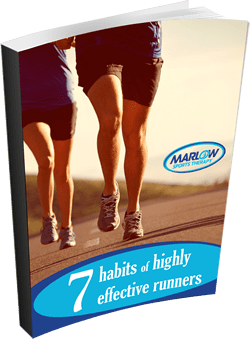Shin Splints is a commonly used name for 2 types of Overuse Injury. Tibial Periostitis and Medial Tibial Stress Syndrome (MTSS). Shin splints treatment and management of the two injuries is often interchangeable. Bio-mechanical issues or improper footwear can cause ‘shin splint’ pain. Any repetitive impact activities, such as running, dancing or jumping, put stress on the lower legs and provoke ‘shin splints’.

What are Shin Splints?
Leg muscles not conditioned enough for exercise can cause this classic too much, too soon injury. Shin splint symptoms are initially, pain down the front and/or inside of the shin and comes on gradually during a run. In minor cases the pain will ease with rest, but can get progressively worse if ignored. In more serious cases, the pain can come-on immediately and does not ease straight away with rest.
Symptoms of Tibial Periostitis can include tenderness, (dull or sharp) pain and swelling in between the calf muscle and tibia on the inside of the shin. Excessive tension from calf and foot muscles that attach to the periosteum of the tibia trigger micro-damage to the periosteum every time you run. Strength and flexibility imbalances between different muscles in the calf and foot is often the cause of excessive tension.
Symptoms of MTSS are very similar, the mechanism and severity of injury is can be very different! MTSS is really a continuum describing ‘bone stress’ of the tibia. This could include the periosteum and deeper layers of bone in the tibia. In medical literature it’s not defined as ‘damage’ but if ignored and left untreated can develop into a stress fracture . Its also thought impact imbalances of tension and compression through the tibia can trigger MTSS.
A combination of many factors such as footware, gait, joint mobility and muscle strength imbalances can cause MTSS. Although normally not requiring surgery, the rest and rehab periods for MTSS are longer.
Shin Splints Treatment
Shin splints treatment typically involves rest and ice to reduce acute symptoms. Pain medication can relieve pain although it rarely addresses the underlying cause. Regular calf stretching is an important self-treatment practice, see the video below. Supplementing running/jumping with exercises such as swimming or cycling is a great way to keep up fitness without the impact stress. Impact activity can be progressively reintroduced once symptoms have resolved.
A course of sports massage can be an extremely beneficial way to speed up recovery and help stimulate healing in your calves. A sports therapy session can help identify the true cause of the pain, with a treatment plan to resolve the issue in the fastest time possible. At Marlow Sports Therapy we may use manual therapy, movement therapy and photobiomodulation to speed up healing of damaged tissue. Book an appointment online here.
 Enter your name and email and request our free ebook: 7 Habits of Highly Effective Runners
Enter your name and email and request our free ebook: 7 Habits of Highly Effective Runners